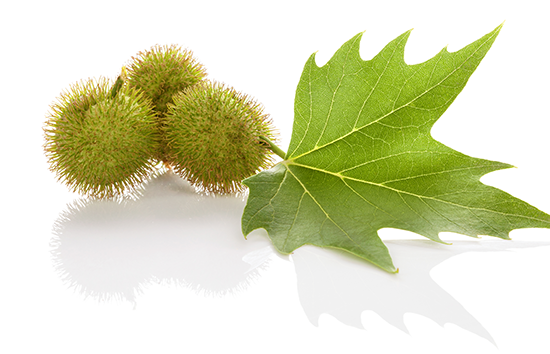
April-May 2019
Priority One:
The Gospel
------------------
|





Spending Time Among the Sycamores
By Brenda Evans
It’s January, early winter, as I write. The sky is blue, but
I don’t have the right word. Azure. Cerulean. Cornflower. No. Bluest blue. I’ve been hungry for sunshine, and now it’s here, faint and wavering behind whitish clouds. Fall and early winter broke our rainfall and dreariness records here in Central Appalachia. For today, thunderous cumulonimbus clouds and dripping gray have drifted east.
I hope they stay a while. Winter looks good today.
The bare sycamores lined up along our creek look good, too. They were there early this morning, stark silhouettes in the pre-dawn light like family or friends who stay and don’t slip away in the night for better company. They feel like sentinels to me in their straight line. Stalwart. Reliable. Keeping watch. At my age, I need sentinels.
I said bare, but thousands of one-inch, spiky seed balls doggedly hang on the sycamores, clinging by stringy stalks to the ends of every twig. Persistent, determined, they will wait until spring to drop and scatter their tiny helicopter seeds to the wind. You would need 200,000 seeds to make a pound, I am told. I’m told also that those with the most seed balls are 50 years old or more. At 200, if they live, they will taper off seed production. Who wouldn’t?
The largest sycamore of the dozen-minus-one lined up along our creek must be my age—in its 70s. It is thick near the ground, 24 inches or more in diameter and 60 to 70 feet tall. It’s too close to the edge of the bank for my comfort. I wonder how it has clung there, on the verge, for so long. I worry it will fall, maybe soon, and I dread it.
High up, our tallest sycamores gleam as the sun shifts in and out of the clouds. Lower on the trunks and branches, they are mottled: creamy white, splotched with greenish gray and
rust-colored exfoliating bark. This older, red-gray bark flakes off in “jigsaw puzzle-shaped plates,” as one arborist says. I watch them grow out of their skins. Outer bark lacks elasticity and doesn’t grow at the quick pace of trunks and limbs. So it yields, splits, sloughs off in thin sheets. Peeling is part of a sycamore’s beauty.
Counter-intuitively, so is aloneness. The most beautiful sycamores I know stand aloof from others. A lone one alongside a road where we used to live, for example, has dazzling white “bones.” Its branches grow up and out and over and around, crooking here and there, contorting into abstract sculptures of great beauty. Its plate-like scales are enormous.
But aloneness is not the same as loneliness. Too much togetherness stunts sycamores. Our sentinels along the creek are crowded. They have limited space to spread and expand their beauty and their seed balls. Most branches, except for a few of the very lowest, grow almost straight up, with only slight spreading near their crowns. Sometimes, solitude gives us space to grow more lovely, to reach farther in creative ways, to touch others with the branches of our lives.
Alone each morning at the big window where I meet the Lord, I look out on my sentinels. This winter, sheets of frost polish our backyard deck, the iron table, and the chairs. Four eastern bluebirds come and flit here and there on low branches or grass and whistle their throaty song. They fluff their feathers to brave our winter. Today, a red-shouldered hawk came screaming into a sycamore branch, turned silent, and poised for prey. He pivoted his head this way and that. Staring, ready. Look, listen, think—I know that ritual.
In 1770, George Washington recorded in his journal that he and some companions traveled down the Ohio River from Pittsburgh in a large dugout canoe looking for settlement land for soldiers. Just 60 miles northeast of where I live, at the junction of the Ohio and Kenawha Rivers, near what is now Point Pleasant, West Virginia, Washington spotted an amazing sycamore. This is what he said: “At this place we met a canoe going to Illinois with sheep, and at this place also…we met with a sycamore about 60 yards from the river, of a most extraordinary size; it measuring 3 feet from the ground 45 feet around, lacking 2 inches.”
Almost 14 feet in diameter—a most extraordinary size, as Washington noted. And there are many other stories. In 1744, a settler named Joseph Hampton and two sons from the eastern shores of Maryland came to the Shenandoah Valley and lived most of a year in a large hollow sycamore tree in what is now Clarke County, Virginia. They enclosed a piece of land and made a crop, then moved the rest of the family to the valley.
Smaller sycamores line the low bluff across our creek, which someone named Rockhouse Fork for the rock houses in its cliff sides. Rock houses are shallow, crepuscular caves, just deep and wide enough for a man or woman with a child to hide in to keep out of rain or wind. All these sycamores are platanus occidentalis—American sycamores, but across the creek, they are more scrawny and maybe more stubborn. Thin layers of soil over limestone make a hard life.
How can sycamores, these everyday, woody perennials of God’s creation, seem so human to me? Maybe it is their ordinariness. Or maybe it’s because they are both a pleasure and a nuisance like we humans are.
Until I lived 40 yards from this creek bank of sycamores, I didn’t know how annoying they could be. One arborist bluntly calls them pesky, and they are, with an almost-human troublesomeness. Among the last to leaf out in the spring, they are the first to begin leaf fall. No sooner do their leaves come out than, here and there, a few turn yellow and turn loose, one by one by one all summer. It’s called sheddability—a sycamore’s disposition to lose leaves. Who wants sheddability? Raking in the middle of summer is hot work.
And then there are their beige hairballs. Botanists define the matted woolly down on sycamore leaves and twigs as tomentum, a Latin word that literally means “cushion stuffing.” It sheds and forms tiny hairballs, small tufts that blow hither and yon, stir up allergies, collect on the driveway, and swoop into our garage. Try sweeping out tomentum. It scatters like mice at the sight of a broom, but never toward the garage door.
Sycamores have another side, too. One tree can produce 10,000 seeds per season that become food for certain birds and mammals, including squirrels and muskrats. One botanist calls them “fortresses of creek banks” because their roots deter erosion. The wood itself is useful, too, for butcher blocks, furniture, boxes, crates, and pallets. It is low in acid and doesn’t rust nails. Sycamores are sometimes called buttonwood trees because buttons for clothing and shoes have often been made from their wood.
Then there is the Buttonwood Agreement. May 17, 1792, 16 years after our nation’s founding, 24 stockbrokers and business owners signed a two-sentence agreement under a buttonwood tree at 68 Wall in New York City. It became the direct forerunner of The New York Stock Exchange. The agreement, touched off by a financial panic of falling prices, botched deals, and bank runs—now called the Panic of 1792—began in March and April of that year. The agreement stated that those 24 men would only deal financially with each other, not auctioneers, and would not charge more than 0.25% interest in commissions. Under an ordinary sycamore on Wall Street. I love it.
Our sycamores have become old friends. I gaze at them at first light each morning as a summons from our creek bank to draw me into God’s pure, infallible Word.
Spending time among the sycamores is good.
About the Writer: Brenda Evans lives and writes in Ashland, Kentucky. You may contact her at beejayevans@windstream.net.
|
|

